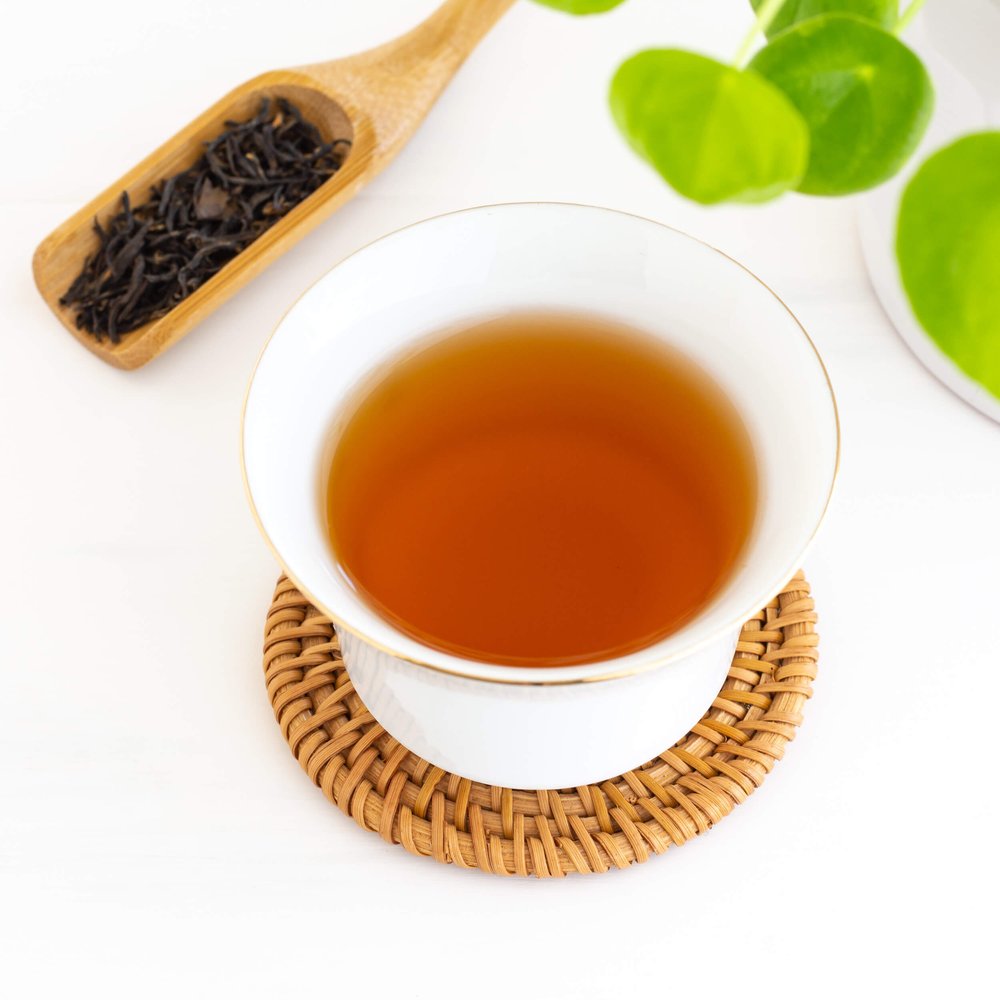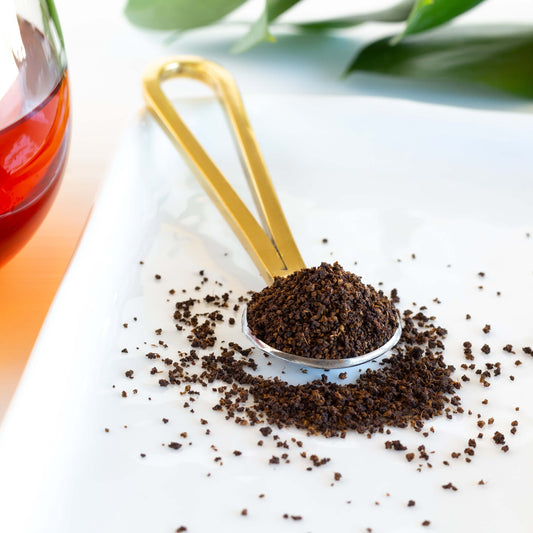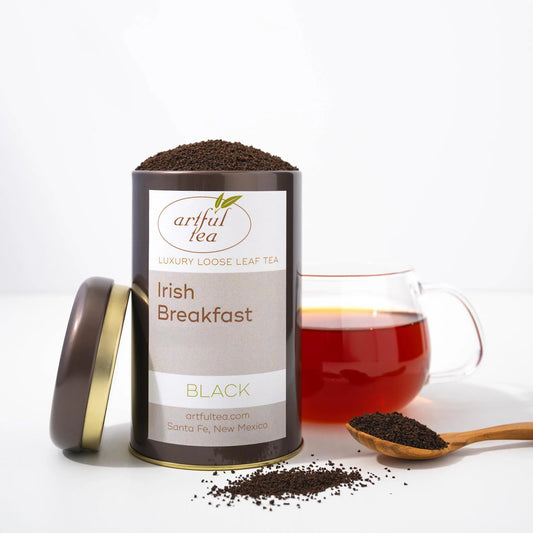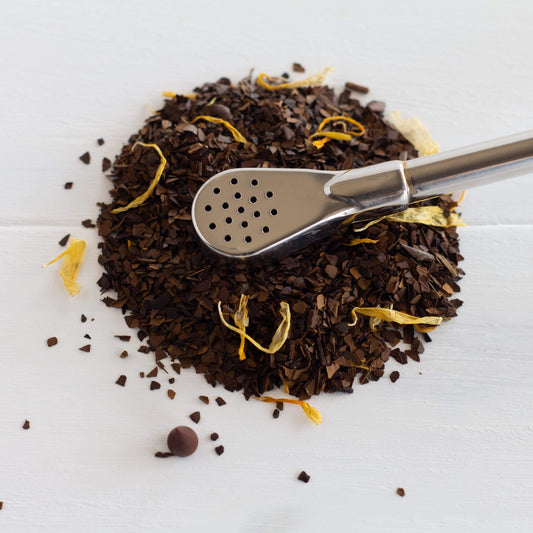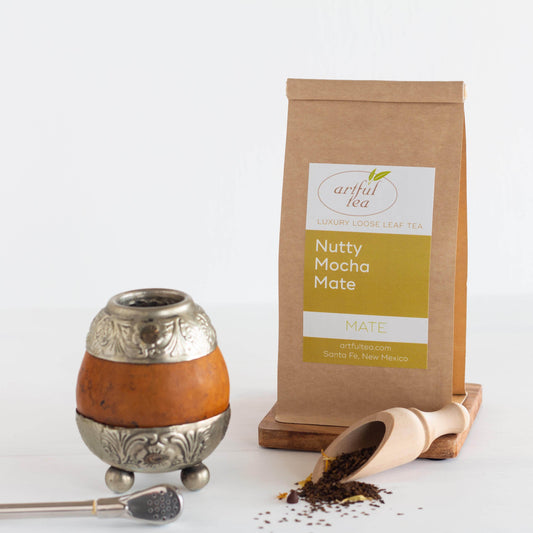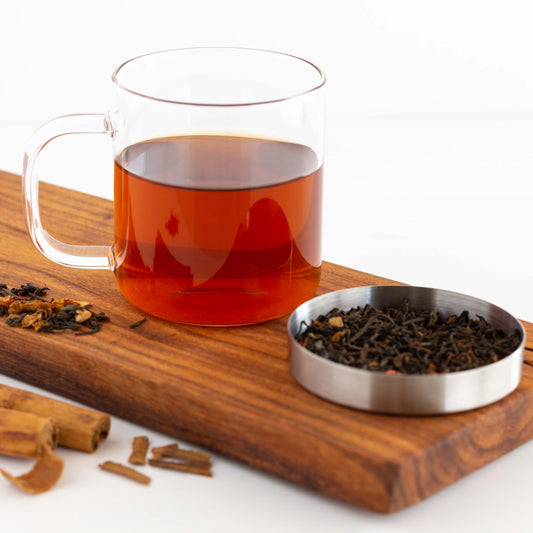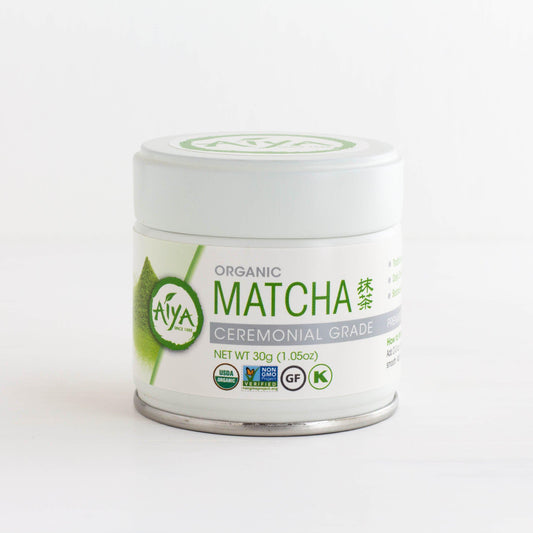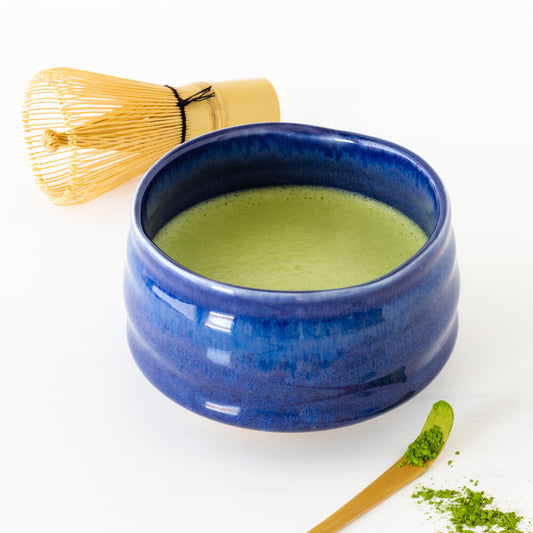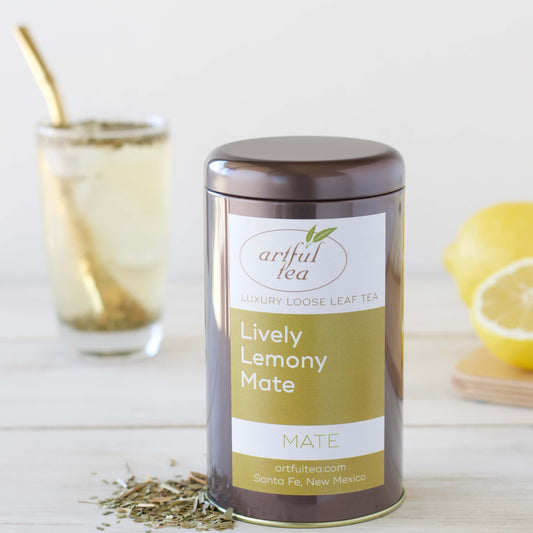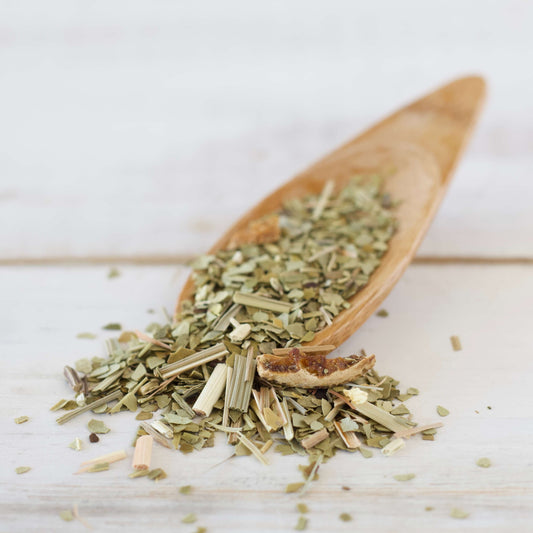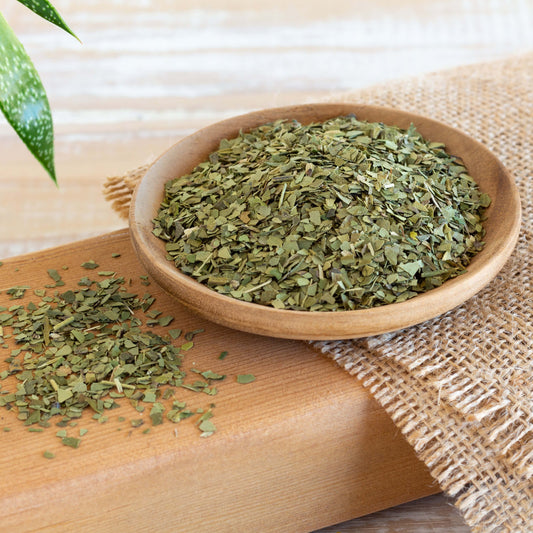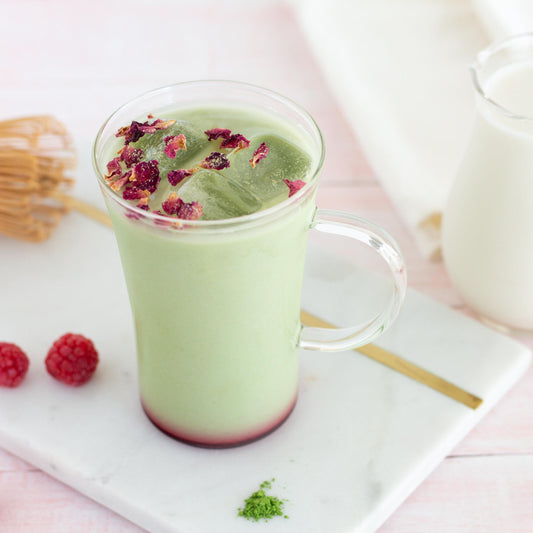Teas with high caffeine contents
Which teas have the most caffeine? Here are our top picks for highly caffeinated teas:
1. Matcha
Matcha is a powdered green tea made from stone-ground tea leaves and produced mainly in Japan. Matcha is high in caffeine for several reasons
For one, when you drink a bowl of matcha you’re actually consuming whole tea leaves, rather than a diluted infusion like when you drink a traditionally brewed cup of tea. This means that you’re getting a concentrated dose of many of the beneficial compounds present in tea, including caffeine, l-theanine, and antioxidants.
The tea plants used to produce matcha are shaded for several weeks prior to harvest, which also increases the caffeine content.
2. Black tea
Black tea also tends to be high in caffeine. Many hearty breakfast blends, like Irish Breakfast and English Breakfast, are made from Indian black teas of the camellia sinensis var. assamica varietal, which tends to be higher in caffeine.
Black tea blends are often coarsely chopped into finer broken tea leaves, which can increase caffeine content. Finally, black teas tend to be prepared using hotter water and steeped for a longer time, both of which can result in a cup of tea that is especially high in caffeine.
3. Pu-erh tea
Pu-erh teas are aged teas commonly produced in China. These teas have a rich, earthy flavor, brew up an inky black color, and tend to be very high in caffeine.
Like black teas, pu-erh teas are often prepared using hot water and by steeping the tea leaves for a longer period of time, which results in a stronger, more caffeinated cup of tea. Ripe (shou) pu-erh that is fermented using a wet-pile method tends to be higher in caffeine than raw (sheng) pu-erh that is fermented according to traditional methods.
4. Shaded green teas
In Japan, some types of specialty tea plants are shaded for several weeks before harvest, which increases the caffeine levels present in the tea. Gyokuro and matcha plants are both shaded for three weeks prior to harvest, while Kabusecha plants are typically shaded for around two weeks prior to harvest.
This means that these teas tend to have a higher caffeine content than other types of green tea. Japanese green teas are also usually steamed in order to halt the oxidation process, which increases the caffeine content present in tea.
5. Mate
While yerba mate does contain caffeine, it’s not actually related to the tea plant. Native to South America and popular in countries like Argentina and Chile, mate is actually a species of the holly plant. Mate tends to be high in caffeine, containing almost as much per cup as coffee. Mate can be consumed on its own, or as an ingredient in flavored blends like Nutty Mocha Mate and Lively Lemony Mate.
Other caffeinated teas
While the teas listed above are especially high in caffeine, all teas made from the camellia sinensis plant contain some amount of caffeine. In general, black and pu-erh teas have the highest amount of caffeine, followed by oolong teas, green teas, white teas, and purple teas.
However, because the caffeine content of a brewed cup of tea depends on many different factors, even teas within the same broad categories may have different caffeine levels.
Since caffeine can affect people very differently depending on their own unique body chemistry and predispositions, it’s hard to predict just how the caffeine in a particular tea may affect you. If you’re worried about consuming too much caffeine, try limiting your caffeinated tea consumption to one or two cups a day, and avoid drinking caffeinated tea in the afternoon or evening.
On the other hand, if you’re trying to boost your caffeine intake, our high-caffeine teas might be just the thing! Whether you go for a rich, earthy pu-erh, a bowl of meditative matcha, or one of our other highly caffeinated teas, it’s sure to give you the boost of energy you need to power through the day.
Caffeine and tea
Caffeine content present in tea varies depending on several different variables, and can be influenced by properties contained within the tea itself as well as by different brewing and preparation methods. These include:
- Tea varietal: All tea is produced from the same plant. The tea plant (camellia sinensis) has two main varietals: camellia sinensis var. sinensis, which is grown mainly in China, and camellia sinensis var. assamica, which is grown mainly in India. Teas produced from the camellia sinensis var. assamica varietal tend to have higher caffeine levels.
- Harvest time: In general, teas that are harvested in the Spring have a higher caffeine level than teas that are harvested later in the year. This includes teas like silver tip white teas and first flush Darjeeling teas. Teas harvested in the spring tend to be composed of smaller leaves and buds, which also contributes to their higher caffeine level.
- Growing practices: Certain growing practices can also influence the caffeine content of tea. In particular, shading tea plants for several weeks before harvest dramatically increases the caffeine content. This is part of the reason why matcha, as well as other shade-grown Japanese teas like Gyokuro and Kabusecha, and especially high in caffeine.
- Processing methods: Caffeine levels may also vary depending on how the tea is processed. For example, matcha is produced by grinding whole green tea leaves into a fine powder, which dramatically increases the caffeine content, since you’re consuming the entire tea leaf when you drink a bowl of matcha. Similarly, finely ground teas like Irish Breakfast tend to be higher in caffeine than fuller loose leaf teas.
- Steep time: The longer you steep tea, the higher the caffeine content will be. This is part of the reason why black teas, which tend to be infused for a longer period of time than other types of tea, are higher in caffeine. Shorter steep times tend to result in a lower caffeine level, which means that teas that are steeped for only one or two minutes, like green tea and white tea, are often lower in caffeine.
- Water temperature: Water temperature is another important factor when it comes to the caffeine content of a cup of tea. Tea that is brewed with boiling water, like black tea or pu-erh tea, is usually higher in caffeine. Tea that is brewed with cooler water, like green tea, tends to contain less caffeine.
- Amount of tea leaves: The more tea leaves you use, the stronger your tea will be.
Because the caffeine content present in tea depends on so many different factors, it can be difficult to determine the exact caffeine content of any given tea. In general, black teas, pu-erh teas, and matcha tend to be high in caffeine, while other types of tea like white tea, green tea, and oolong tea tend to be lower in caffeine.
It’s important to remember that these are just general guidelines - the actual caffeine content present in a particular cup of tea can vary widely from tea to tea, even with teas that are in the same tea “category.”
The caffeine present in tea can also affect different people in different ways depending on their caffeine sensitivity and unique biochemistry. Some people are up all night if they drink a sip of caffeinated tea after noon, while others can consume caffeine well into the evening without experiencing any adverse effects. Caffeine sensitivity also tends to increase with age, so you may find yourself more sensitive to highly caffeinated teas as you get older.
Caffeine and l-theanine
Unlike other caffeinated drinks like coffee or energy drinks, tea made from the camellia sinensis plant contains both caffeine and a unique compound known as l-theanine. While caffeine is a stimulant, l-theanine works to reduce stress and encourage calm and relaxation.
Together, many people describe caffeine and l-theanine as having a meditative effect that is ideal for focus and concentration. Matcha and shade-grown green teas like Gyokuro and Kabusecha tend to be especially high in l-theanine, but all true tea contains both l-theanine and caffeine. This combo may make it so that you experience the effects of caffeine slightly differently, with less of a nervy, jittery sensation and more of a calm and energized effect.
FAQs
Does green tea have caffeine?
Green tea does contain caffeine, but usually has a lower caffeine content than black tea and oolong tea. One exception is shade grown green teas like Kabusecha and Gyokuro, which tend to be high in caffeine.
Does all tea have caffeine?
All teas produced from the camellia sinensis plant have caffeine, including black tea, green tea, oolong tea, white tea, pu-erh tea, and purple tea. Although not related to the tea plant, mate is also high in caffeine. Herbal teas and rooibos teas contain no caffeine.
What tea has the most caffeine?
Matcha tends to have the most caffeine out of any type of tea. This is because you ingest whole tea leaves when you drink matcha. After matcha, black tea and pu-erh tea are especially high in caffeine.
